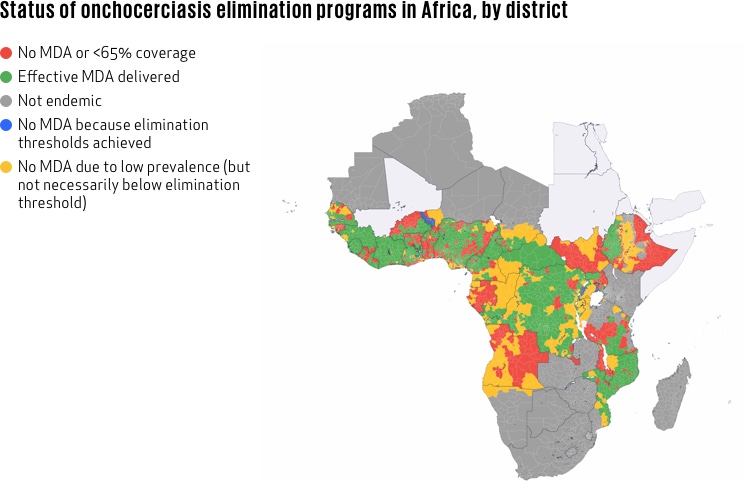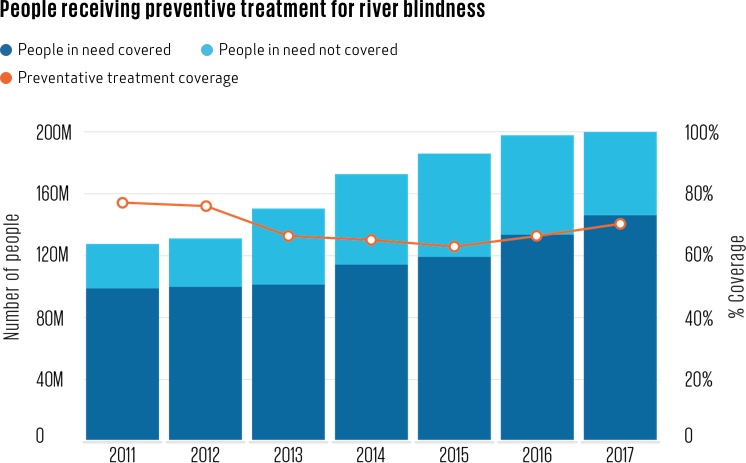SDG target: End the epidemics of AIDS, tuberculosis, malaria, and neglected tropical diseases.
In the phrase “neglected tropical diseases” (NTDs), the adjective “neglected” refers to a group of approximately 20 diseases but it could just as easily describe the 1.5 billion people affected by them. Winning the fight against NTDs requires learning how to meet the needs of people whose needs have never been met before.
Prevalence rate of 15 NTDs per 100,000 people
Current projection
If we progress
If we regress
Consider onchocerciasis, a parasitic disease that causes horrific itching and, in severe cases, blindness (it’s also known as river blindness). Onchocerciasis is transmitted by black flies that breed near fast-flowing rivers. As a result, some of the poorest farmers in the world have been forced to abandon the best soil found in river basins and try to eke a living out of infertile land.
The good news is that onchocerciasis is treatable with ivermectin, a drug that Merck has been providing for free since 1987. Unfortunately, although ivermectin kills symptom-causing juvenile worms, it doesn’t kill adult worms—which can keep reproducing for up to 15 years. Moreover, 200 million people in remote villages spread across sub-Saharan Africa are at risk of being infected.
Given these challenges, onchocerciasis elimination is based on what is known as mass drug administration (MDA): every year, volunteer health workers in tens of thousands of far-flung villages give ivermectin to every local resident. After approximately 15 years, if MDA coverage is consistently high, the adult worms in people’s bodies die of old age and transmission is broken.

But the more successful we are, the harder the work gets. First, people who’ve taken a drug for 10 years in a row and probably don’t feel sick are not eager to keep taking it. Second, diagnostic tests aren’t sensitive enough to pinpoint where the disease is totally gone and where it’s just at very low levels. Consequently, we don’t know when it’s safe to stop doing MDA.

We continue to invest in better diagnostics and drugs, yet we must rely on some of the most fragile health systems in the world to conquer the massive logistics of high-quality, widespread MDA campaigns year after year. Many are rising to the challenge. Onchocerciasis transmission has been interrupted in two Nigerian states and parts of Mali, Senegal, Sudan, and Uganda. Moreover, countries like Malawi and Sierra Leone, with GDP per capita below $1,000, have exceeded 75 percent MDA coverage for multiple NTDs three years running.
The task now is for every country to achieve and sustain this kind of progress everywhere NTDs are endemic until they are either under control or completely eliminated.